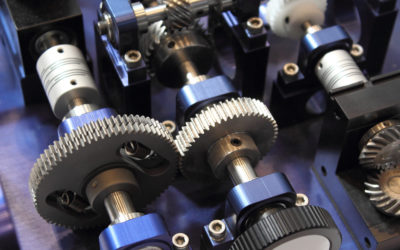Although the terms lean manufacturing and continuous improvement are thrown around and used interchangeably, they are not the same. Lean manufacturing is a business operating system, originating from the Toyota System, with applications across industries. Continuous improvement, called kaizen in lean circles, is a critical component of lean, but could also be used effectively as part of other business systems. Understanding the differences between these methodologies will help you use them to improve your operations.
What is Lean Manufacturing?
Lean manufacturing (a.k.a. lean production or lean) has many definitions, depending on who you talk to and what their experience is. To some, it is a negative term associated with headcount reduction, to others it is an evolved way to run a business, the “Thinking People’s System”. Our working definition of lean is an operating system designed to build a dynamic, effective operation using the least amount of resources possible. The term lean manufacturing was created by The Lean Management Institute as a generic term for the Toyota System, often called the Toyota Production System (TPS) or Toyota Management System (TMS). Although this difference can lead to some confusion, these two points will keep the connection: 1. Connect all elements of lean back to the Toyota System and 2. Make sure lean involves the full operation, and eventually the full company, not a department or a plant.
What is Continuous Improvement?
Let’s break it down to basic elements: continuous means ongoing, uninterrupted (not to be confused with continual, which means often or regularly-occurring), and improvement means positive change. So, continuous improvement means ongoing positive change to all phases of your operation. Continuous improvement done well is a constant effort that changes the way people work, the way people think, the processes, and the capability of an operation. The individual changes are small, but compound to significant gains without the expense or risk of implementing large changes all at once. Authority to implement these improvements should stay with the people closest to the work for maximum effect.
How Can Lean Manufacturing and Continuous Improvement Initiatives Work Together?
So now we’ve established definitions for lean and continuous improvement, but how do they work together? One point is that while all lean organizations practice continuous improvement, not all organizations that practice continuous improvement are lean. That’s not to say the organizations that are not lean are good or bad, just that lean is a very specific system and way of thinking that includes the discipline of continuous improvement throughout. That “throughout” part is a key element. Lean provides a structure for continuous improvement in pursuit of clear goals, communicated to all people involved. What is the goal of the change? What did we change? How did it work? What happens next? Place your continuous improvement in context to ensure effort is applied in the right direction.
Geolean can provide you with lean solutions to streamline your operations and help meet your continuous improvement goals. Contact us today to get started.



